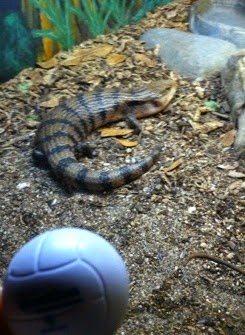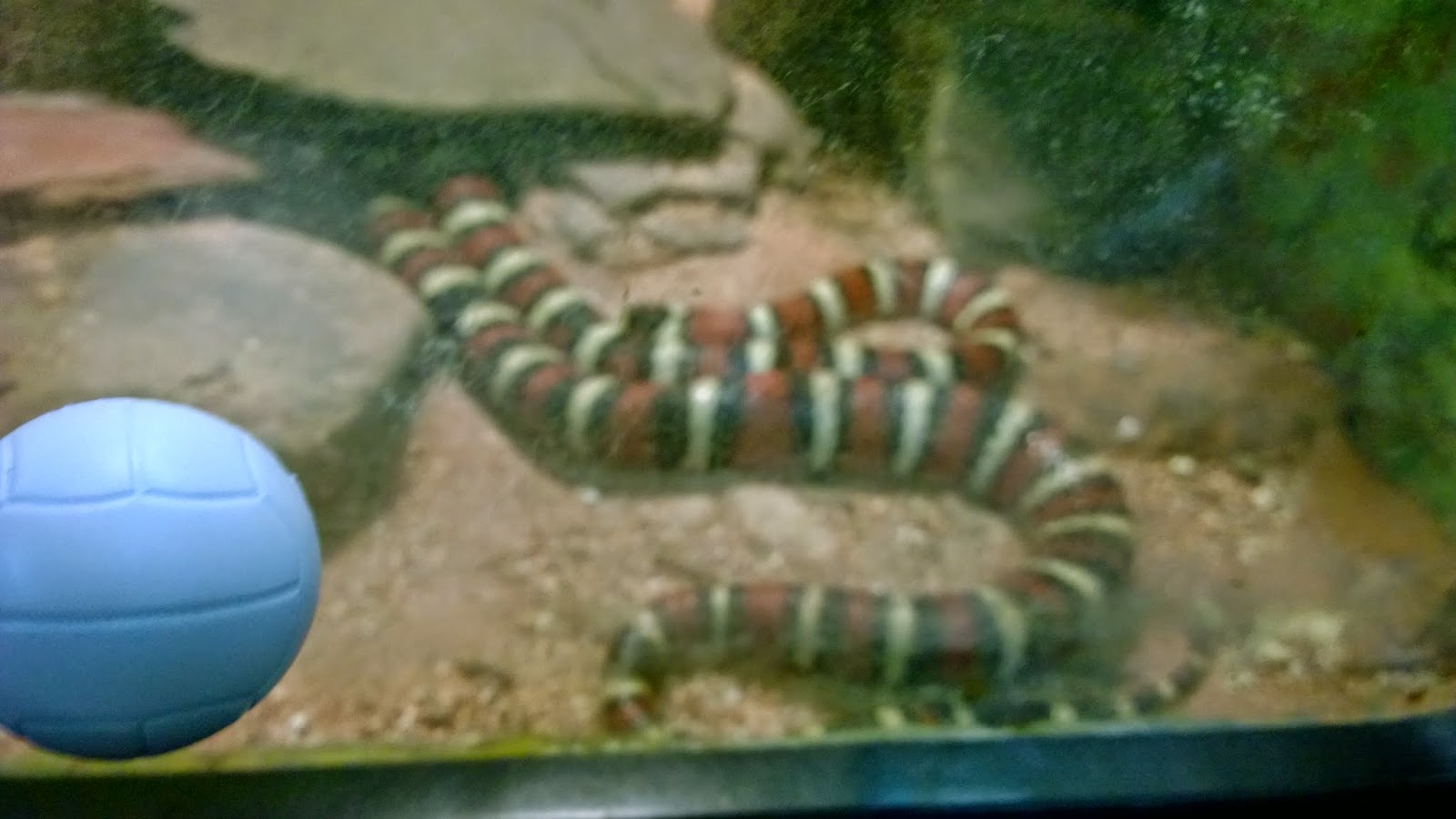Sunday, August 31, 2014
Connective tissue
This is a picture of an ear. The outside of an ear is completely made up of cartilage, which is connective tissue. Connective tissues are the parts of the body that bind and support other body tissues and organs. Cartilage is a type of connective tissue that is tough, semi-transparent, elastic and flexible that is found in the outside of the ear.
Dominant vs. Recessive Phenotype
This is a picture of my family, my niece and my sister. My niece (left) has blue eyes and blonde hair, which represents the recessive phenotypes. While my sister (right) has brown eyes and brown hair, which represents the dominant phenotypes. A phenotype are all of the observable and physical characteristics of an organism. Dominant phenotypes appear more often then recessive. Blonde hair and blue eyes, like my niece, are rare compared to my sister's brown eyes and brown hair. I have brown eyes and blonde hair, so i have both recessive and dominant phenotypes.
Vestigial Structure
This is a picture of a person's plica semilunaris, but it is most commonly referred to as the third eyelid. The plica semilunaris is the small fold of tissue located on the inside corner of your eye. A third eye is an example of a vestigial structure. A vestigial structure is a body part or organ that has lost its original function as the species has evolved over time. A third eyelid is is a vestigial structure because the original purpose was to insure that the eye remains moist. As time progressed the third eyelid has decreased in size, which causes it to be unable to fulfill its original purpose.
Thursday, August 28, 2014
Detritivore
This is a picture of an earthworm. An earthworm is an example of a detritivore. A detritivore is a very important animal and crucial to every ecosystem because it feeds on the waste of decomposing matter. Earthworms help breakdown dead leaves and help the soil receive crucial nutrients that is returned back into the soil.
Exoskeleton
This is a picture of a snail. A snail has an exoskeleton. An exoskeleton is an external skeleton that supports and protects an animal's body. A snail has the large shell on its back that supports and protects it body from its outside surroundings.
Territorial Behavior
This is a picture of a dog. A dog can be seen as possessing territorial behavior. Territorial behavior is a method by which an animal protects their territory from outside species. A dog is widely known as having protective instincts - a.k.a. barking at mail men or other noises, and snarling. We even promote their domineer with the use of the "beware of dog signs" that warn strangers of their aggressive behavior.
Homologous Structures
This is a picture of a feline species. A feline has four legs, which are also considered homologous structures. Homologous structures are structures that come from a common ancestor or the same origin. These structures are common features found in a variety of species, such as a human's arm, a bat's wing, a whale's fin or even a cat's leg.
Homeostasis
This picture is of a couple of volleyball players after a three hour practice. Athletes usually sweat during a practice due to lots of exercise and the hot, Bruton gym. An athlete's sweat is an example of homeostasis, which is the body's ability to maintain constant conditions such as temperature and blood pressure.When a person's, or athlete in this case exercise, temperature increases, the body attempts to cool off causing the sweat glands become activated, creating sweat.
Wednesday, August 27, 2014
Altruistic Behavior
This picture is of guinea hens, which is a type of bird. Numerous bird species act using altruistic behavior, which is when a species's behavior benefits another species, at a cost to itself. New bird parents usually receive help in raising its young from other birds. They help to protect the nest from predators and help feed the newborns, after they hatch.
Niche
This is a picture of a bee. A bee represents a niche. A niche is an organisms role in their environment. A bee's niche is to collect nectar in order to make honey, in doing so, they also pollinate flowers and plants.
Lipid Used for Energy Storage
This is a picture of oil, such as canola oil and olive order. Oil, such as the olive or canola oil found in an everyday kitchen, is an example of a lipid, because it is composed of triglycerides that allow animals to produce facts that sore energy. A lipid is a fatty or waxy organic compound that is soluble in non-polar solutions.
Keystone Species
This is a picture of a sea otter. A sea otter is an example of keystone species, which are species that are very influential part of their habitat. When a keystone species is removed from a habitat, the habitat is dramatically changed. Sea otters are keystone species usually found in the kelp forests. These animals help control the sea urchin population, who eat kelp - a major food source in the habitat.
Ectotherm
This picture is a blue-tongue skink. A blue-tongue skink is an example of an ectotherm. An ectotherm is a cold-blooded animal, meaning that they are dependent on the environment around them to control their body temperature. A blue-tongue skink is a reptile who body temperature varies with the temperature of its surroundings.
Adaptation of an Animal
This is a picture of a giraffe. A giraffe's long neck is an adaptation of an animal. An adaptation is the ability an animal (in this case, but it applies to all organisms) has that allows them to change or adapt to their surrounding. A giraffe has evolved and have developed a longer neck to reach the nutritious leaves or plants that are usually high up in the trees.
Cuticle Layer of a Plant
This is an example of a plant. The outermost layer of the plant is an example of the cuticle layer. The cuticle layer is the outermost layer of an organism that comes in contact with its environment.
K-Strategist
This is a picture of an elephant. An elephant is an example of a k-strategist species. K-strategist are species that have few offspring, have a long life expectancy, and are large in size. An elephant is a very large animal and usually has a calf about every four years. They are even known to live for an average of 70 years.
Endotherm
This a picture of a red river hog. A red river hog is an example of an endotherm, which are warm-blooded animals. A red river hog maintains its body temperature, making it a endotherm.
Bilateral Symmetry
This is a picture of a butterfly (more or less). A butterfly is an example of bilateral symmetry which has a mirror like symmetry when one draws a line down the middle, making it look as if one side is reflecting the other. A butterfly's wings are usually the same on design and color on each wing.
Pollinator
This is a picture of a bee. The bee is an example of a pollinator which is an insect that transfers the pollen from a flower's anther to the stigma. While collecting nectar and pollen a bee can inadvertently transfer pollen from one flower to the other.
Anther and Filament of Stamen
This is a picture of a flower. There is a blue circle and a green square in the middle of the flower that represents the anther (blue circle) and the filament (green square). The anther is the part of the stamen where the pollen is produced while the filament is the part of the stamen that supports the anther.
Batesian Mimicry
This is a picture of an Arizona mountain snake. This specific snake represents batesian mimicry, which is when a harmless species imitates a harmful species. The harmless Arizona mountain snake mimics/imitates the same black, red and white/yellow stripes of the Arizona coral snake, a poisonous and very harmful snake.
Hermaphrodite
Autotroph
This is a picture of a flower/plant. The flower/plant is an example of an autotroph, which is simply any organism that is capable of self-nourishment and is self-dependent, not having to depend on another organism for the proper nutrients to live. The flower/plant uses photosynthesis as its source to create food.
Hydrophilic
This is a picture of salt. Salt is an example of hydrophilic molecule. A hydrophilic molecule are molecules that are able to be absorbed or dissolved in water and in other solvents also. Salt can be dissolved in water - the world's universal solvent - allowing it to become qualified as a hydrophilic molecule.
Basiodiomycete
Subscribe to:
Posts (Atom)
























